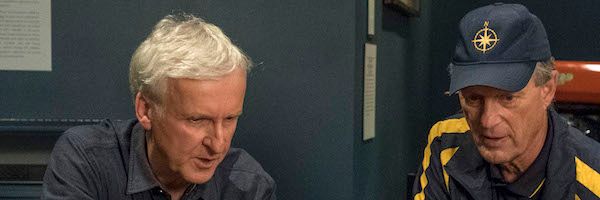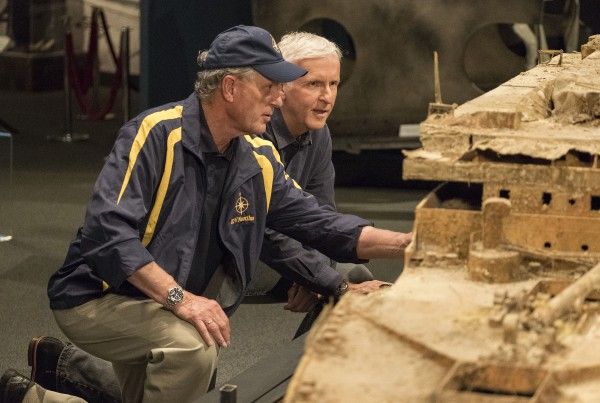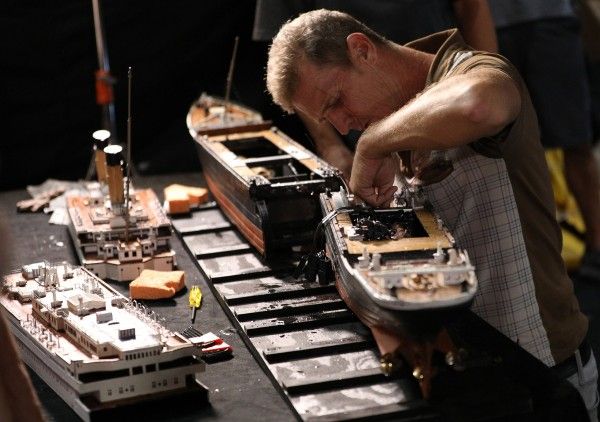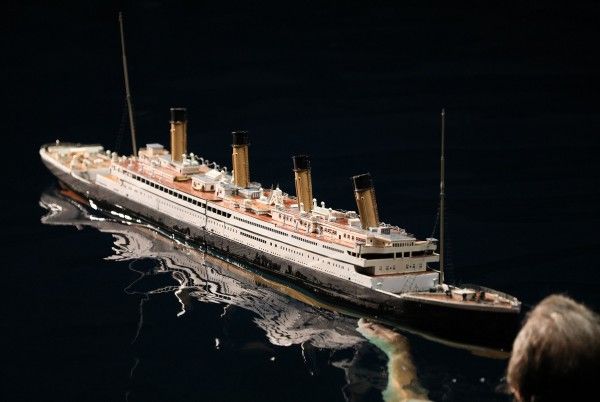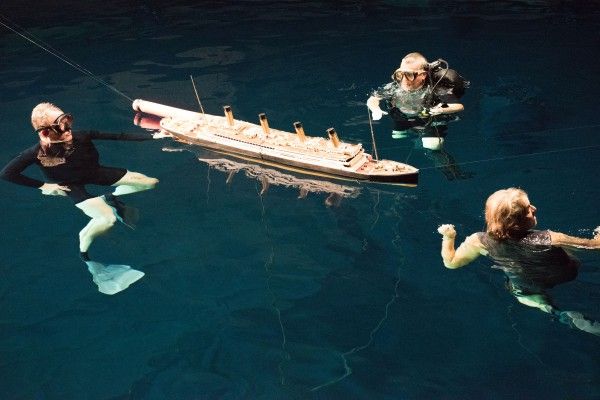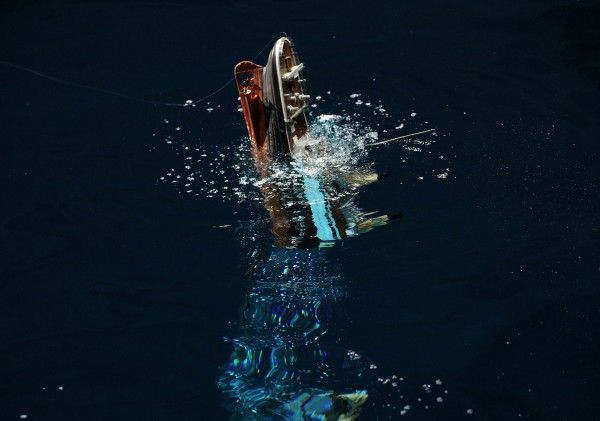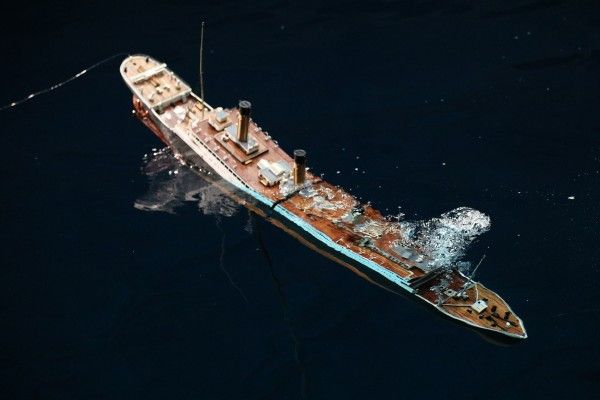Twenty years after the blockbuster movie Titanic, the story of the doomed ship is still evolving in unexpected ways, and the one-hour National Geographic documentary special Titanic: 20 Years Later, from executive producer and explorer-in-residence James Cameron, examines two decades of new revelations. Looking back at all the critical choices made during the film and putting them to the test, the doc also shines a spotlight on the generations of families impacted by the loss of the Titanic and takes audiences through the creation of a living history, giving context to the choices made during production that were based on the historical facts and science available at the time.
During this 1-on-1 phone interview with Collider, filmmaker James Cameron talked about thinking Titanic would be just another movie, having it become such a big part of his life and remain that way, for so many years, the inter-connection between the forensics of the wreck and the human element of it all, having to make the movie without knowing all of the answers, and why he’s re-releasing the film again on December 1st. He also talked about the process of underwater motion capture he’s developing for the Avatar sequels, whether he’ll shoot the Terminator reboot in 3D, and why he thinks the technology has already moved past 3D TVs and is on to 4K, as well as what he thinks is next.
Collider: When you originally set out to make Titanic, could you ever have imagined that you’d still be here, so many years later, thinking about it and learning about it? Were you prepared for it being such a big part of your life?
JAMES CAMERON: No. I think I thought it was going to be just like any other film that I’d made. Like Aliens or Terminator or True Lies, I thought it would have its season in my life, and then it would fade away and wind up on a shelf. But, Titanic tends not to do that. Titanic is not only endlessly fascinating, but it tends to suck you back in because there are so many unanswered questions. You feel like, “If we could have just done a little more on that expedition. If we could have just had one more dive. If our vehicle wouldn’t have failed at a critical moment, we would have gotten into that last corner, or down into the boiler room.” There’s always more to learn at the wreck site, even now, even after we’ve surveyed about 60% of the interior of the ship with our robotics and learned a tremendous amount. It’s also apropos of the 20th anniversary of the film and the fact that the film made such a huge impact, in the pop culture landscape, it seemed like a good excuse, at least, to go back and revisit some of the forensic issues and some of the human stories. So, here we are and now we have another special.
There’s the forensics of the wreck and the human element. What most draws your interest? Is it the technical specifics of what happened, is it the human stories of it all, or is it a combination of both?
CAMERON: I think it’s both. I think it’s how they inter-relate to each other. I tend to really nerd out on the forensics, and it was nice to just step back and tell the human story, of the aftermath of the film and of the long aftermath of the event, itself. There’s still a lot that can be learned from the wreck, and we’ve learned a tremendous amount since we made the film. I made the film based on my first expedition to the wreck and what we had learned, at that point. But you can’t really understand what happened, and certainly not in the last hour or so of the sinking, without understanding how the ship sank and how it broke up. Somebody such as myself, who’s gotten sucked down into the black hole of Titanic, you always want to know more and understand the event better. You’d think that with 703 living witnesses at the time, it would be a very, very well described disaster, but in fact, most of the big events of the sinking happened after the lights went out, on a moon less night, and a lot of people had conflicting reports of what happened and we’ve had to piece it together. With the people that survived, I think it’s really interesting to understand not just who died and who lived, but how and why that happened. There are so many aspects of it that are not forensic, that had to do with class issues, at the time. Gender and class issues really determined a lot, in what your probability of survival was and where you were on the ship. All of those factors make the retelling of any disaster, whether it’s a natural disaster or a human made one, more interesting. I guess I just figured that this is a piece of history that I know and understand, and I’m constantly learning from. I’m learning what the limitations of history really are. We can never really truly understand perfectly what happened, for any historical event. It’s always going to be an approximation, and it’s always told with some sort of agenda or bias of whoever the historian is, or at least the perspective of what that person’s life and societal circumstances are. There’s no such thing as perfect history. I don’t really think I knew that when I was studying history in high school and college, but I certainly know it now.
As someone who clearly likes to get things as right as possible, how hard was it for you to initially make Titanic without knowing whether you were getting everything right, especially when it came to the wreck and the sinking, and what were you surprised that you actually did get right, once you learned more about it later?
CAMERON: I had some great advisors, and they were not advisors that were very stuffy and said they knew everything. They were perfectly willing to admit that there were a lot of gaps in the general knowledge, and they were willing to look at things from new angles. I was also there to shake things up and to challenge some of the assumptions that had been made, historically, because I wanted the right answer. I really posed it as a personal challenge to myself to get it right, and not necessarily right in agreement with the stuffy off-told tale, but right relative to the wreck itself and what we could learn from it. Before I shot the movie, we had already been out to the wreck the previous year and made 12 dives. There were all kinds of things that were not well explained by the conventional wisdom in the Titanic community. What we put into the movie was actually a composite of what was known, what was accepted, and a lot of new ideas that were kind of radical. It was a provocation to the Titanic community to look at things, question it, and really figure it out. It triggered a lot of subsequent investigation, both by ourselves and by other investigators out at the wreck site. It’s satisfying that the picture that’s filled in over time, in the intervening 20 years, is pretty darn close to what we showed in the movie. We obviously got a few things wrong. They’re not egregiously wrong. They were wrong in some of the details, as you’d expect, but not enough that I feel compelled to make another Titanic film. I just want to go on record with that, right now. It’s been an interesting journey. I love marine archeology and marine exploration, and I felt that getting inside the ship with our little robotics was the key to really understanding what happened.
If you could actually talk to one of the people with the Titanic, who would you want to talk to and what would you want to ask them about?
CAMERON: There are all sorts of specifics I could ask, a number of different people, but I think the one I would be most interested in talking to would be Thomas Andrews. He was the designer of the ship and it’s always fascinated me, what it must have felt like for him to be standing about the greatest work of his life, at a relatively young age. He was 39 years old, and he was this enfant terrible of marine architecture community. He was this amazing designer and engineer, and I respect him a great deal. It was nothing that he did wrong that accounted for the failure of the ship. It was just bad seamanship. They ran into an iceberg. His ship was well enough designed that it actually kept people alive long enough to get them to the lifeboats and get them off. I think he’s the one I would like to speak to.
What made you want to re-release Titanic in theaters again, on December 1st?
CAMERON: We’re doing a very, very limited re-release to showcase the new Dolby Vision HDR format, which I think is absolutely stunning and absolutely the way that any 3D film should be seen.
Along with being a filmmaker, you’re also on the cutting edge of technology, and you said awhile back that you were going to be doing underwater motion capture on Avatar 2. How is that process going? What have been the challenges that you didn’t expect, trying to push the boundaries of motion capture by using it underwater?
CAMERON: Well, we’re doing it. It’s never been done before and it’s very tricky because our motion capture system, like most motion capture systems, is what they call optical base, meaning that it uses markers that are photographed with hundreds of cameras. The problem with water is not the underwater part, but the interface between the air and the water, which forms a moving mirror. That moving mirror reflects all the dots and markers, and it creates a bunch of false markers. It’s a little bit like a fighter plane dumping a bunch of chaff to confuse the radar system of a missile. It creates thousands of false targets, so we’ve had to figure out how to get around that problem, which we did. Basically, whenever you add water to any problem, it just gets ten times harder. So, we’ve thrown a lot of horsepower, innovation, imagination and new technology at the problem, and it’s taken us about a year and a half now to work out how we’re going to do it. We’ve done a tremendous amount of testing, and we did it successfully, for the first time, just last Tuesday (November 14th). We actually played an entire scene underwater with our young cast. We’ve got six teenagers and one seven-year-old, and they’re all playing a scene underwater. We’ve been training them for six months now, with how to hold their breath, and they’re all up in the two to four minute range. They’re all perfectly capable of acting underwater, very calmly while holding their breath. We’re not doing any of this on scuba. And we’re getting really good data, beautiful character motion and great facial performance capture. We’ve basically cracked the code. Now, we’re still working in our small test tank. We graduate to our big tank in January. There’s a tremendous amount of water work, across Avatar 2 and 3. It’s ongoing into 4 and 5, but the emphasis is on 2 and 3.
That all sounds incredible!
CAMERON: Well, it’s fun!
With the sale of 3D TVs on the decline and retailers moving more to 4K, does you feel like 3D could make a comeback or did too many other films not do right by the technology?
CAMERON: Yeah, I think the timing was off, with broadcast. They came out with 3D TVs that were premature technology, meaning that they required glasses. While I think people are perfectly comfortable wearing glasses in the movie theater, where they’ve made a contract with themselves that they’re gonna sit for a couple of hours and watch something passively, that’s not how we take in our content, whether it’s TV or laptop or whatever the device is. We want to multi-task and have more social interaction, so the glasses are a non-starter. And then, they came along with the glasses free technology, which is now available and mature, and there was this big pulse and broadcast sports got into it, so it looked like it was gonna go, but it ran out of steam right before the glasses free technology came in. At that moment, the whole broadcast industry pivoted to 4K. They’ll get 4K out of their system, and then they’ll look at what the next big thing is. It will probably be high dynamic range. They’re already done 4K and they’ve done high frame rate. Next thing will be high dynamic range. At that point, I think there will be a place for stereoscopic media to come back into play because the glasses free technology is pretty mature and pretty good. I’m just holding on. And let’s not forget that in movie theaters, we went from somewhere around 3,000 screens, at the time that Avatar was released, up to something like 45,000 or 50,000 3D screens now worldwide. 3D is a part of our lives in the movie world. It’s just a question of how we take in the rest of our content.
Will the new Terminator film be shot in 3D?
CAMERON: Absolutely!
With all of the advancements that you’ve been a part of in filmmaking and in the explorations that you’ve done, does anything feel impossible anymore or is it just a matter of figuring out how to do it?
CAMERON: I think there are lots of things that are impossible, like faster than light travel, but I’m not involved in that. In terms of underwater technology and exploration, I think where there’s a will there’s a way. We now understand how to deal with the deepest pressures of the world’s oceans. It’s just a question of funding and perseverance, at this point. If we wanted to get in and explore, in great detail, the inside of the Titanic or any other shipwreck, we could do that better now, with new equipment that I can imagine building. ’m not intending to do it, but all technology and innovation is iterative. It iterates on the milestone technology of the past. We jump things forward a lot, building machines to go to Titanic, to Bismarck, and then ultimately to the Challenger Deep, seven miles down. Other people will build on top of that, and it just continues that way.
Titanic: 20 Years Later premieres on National Geographic on November 26th.

